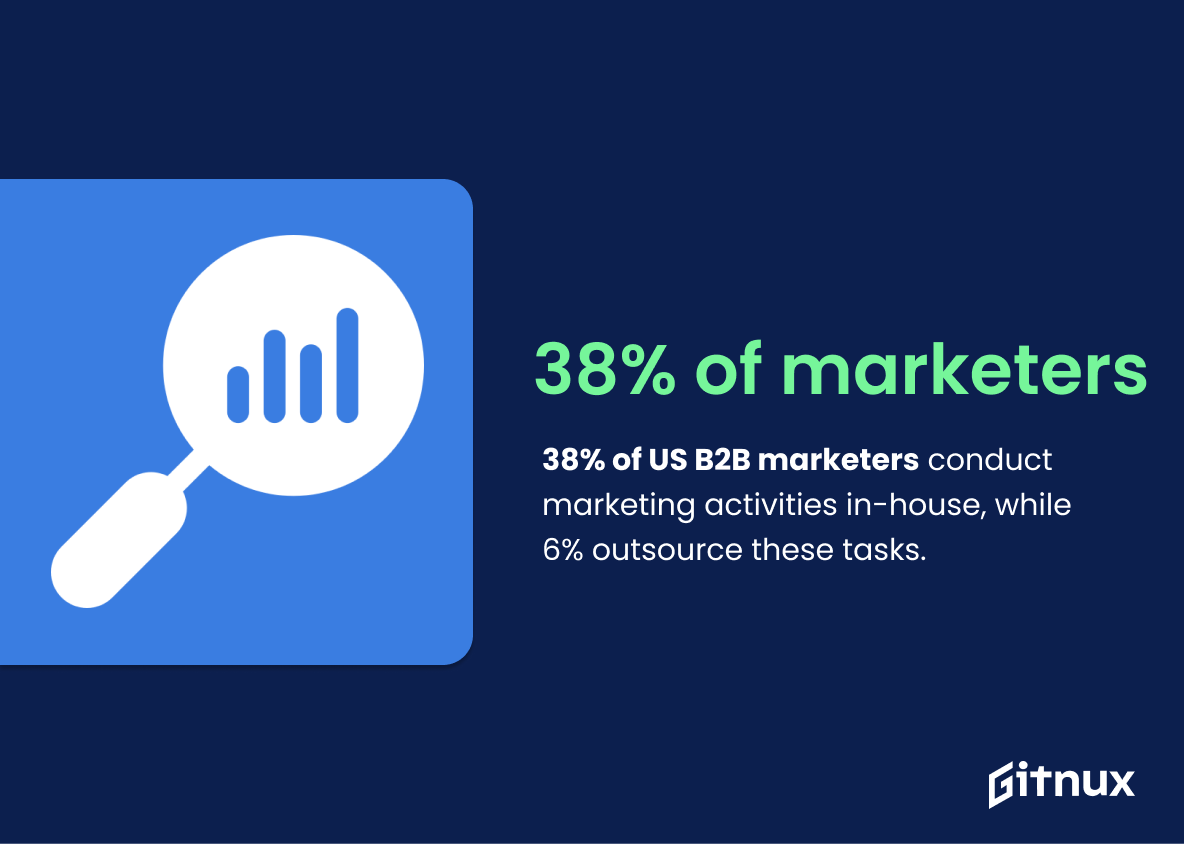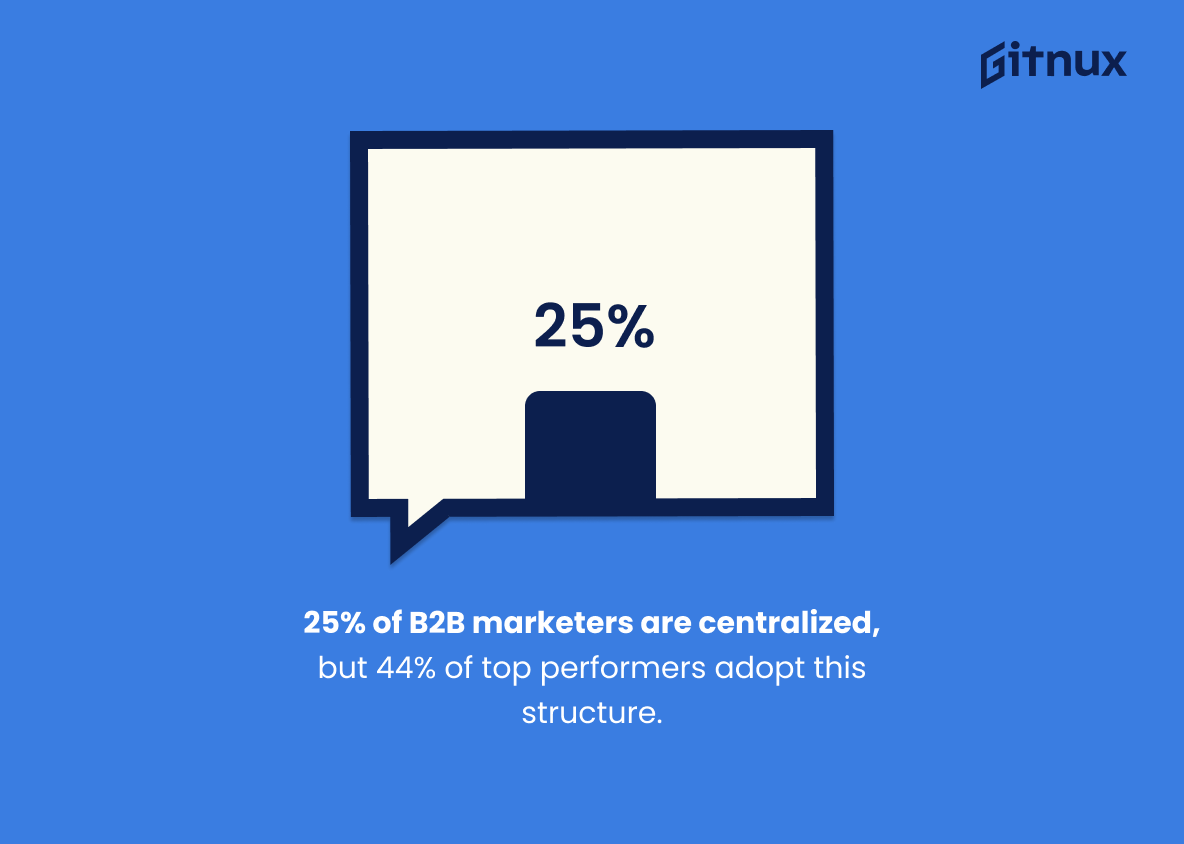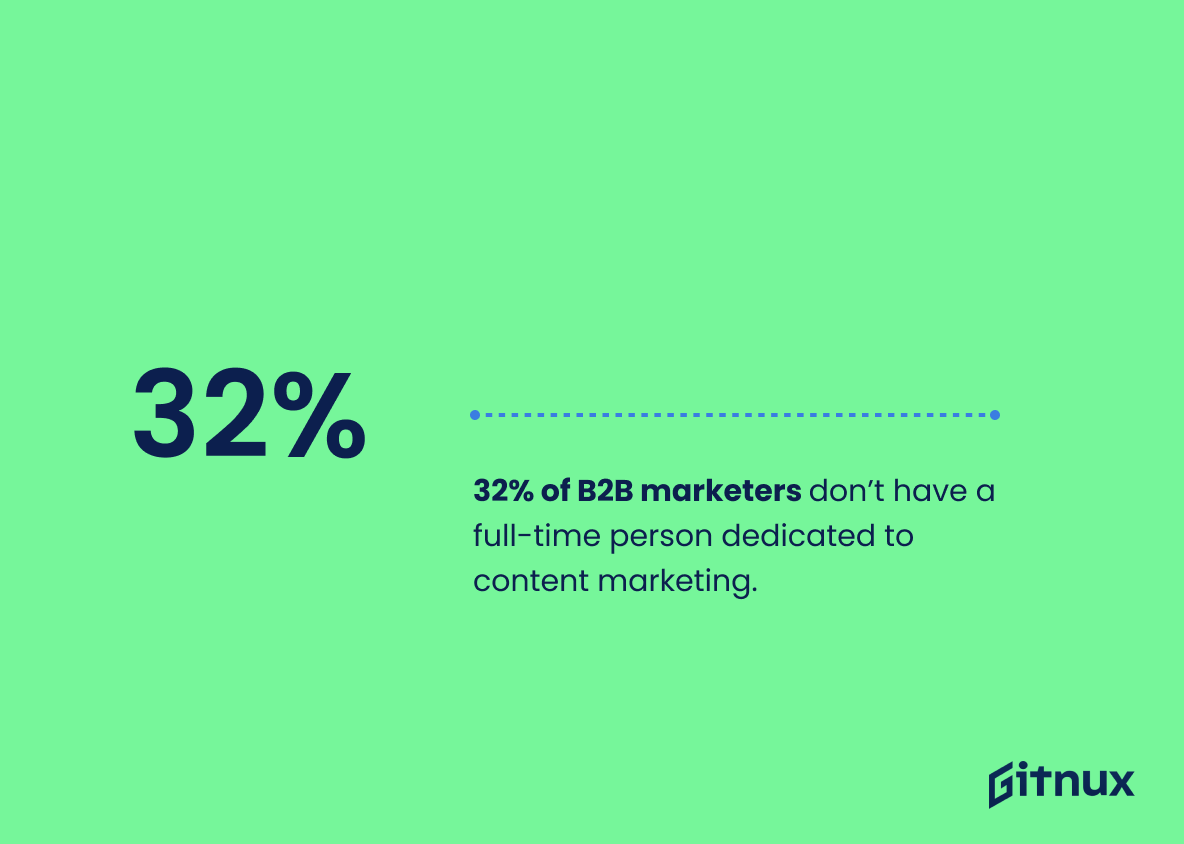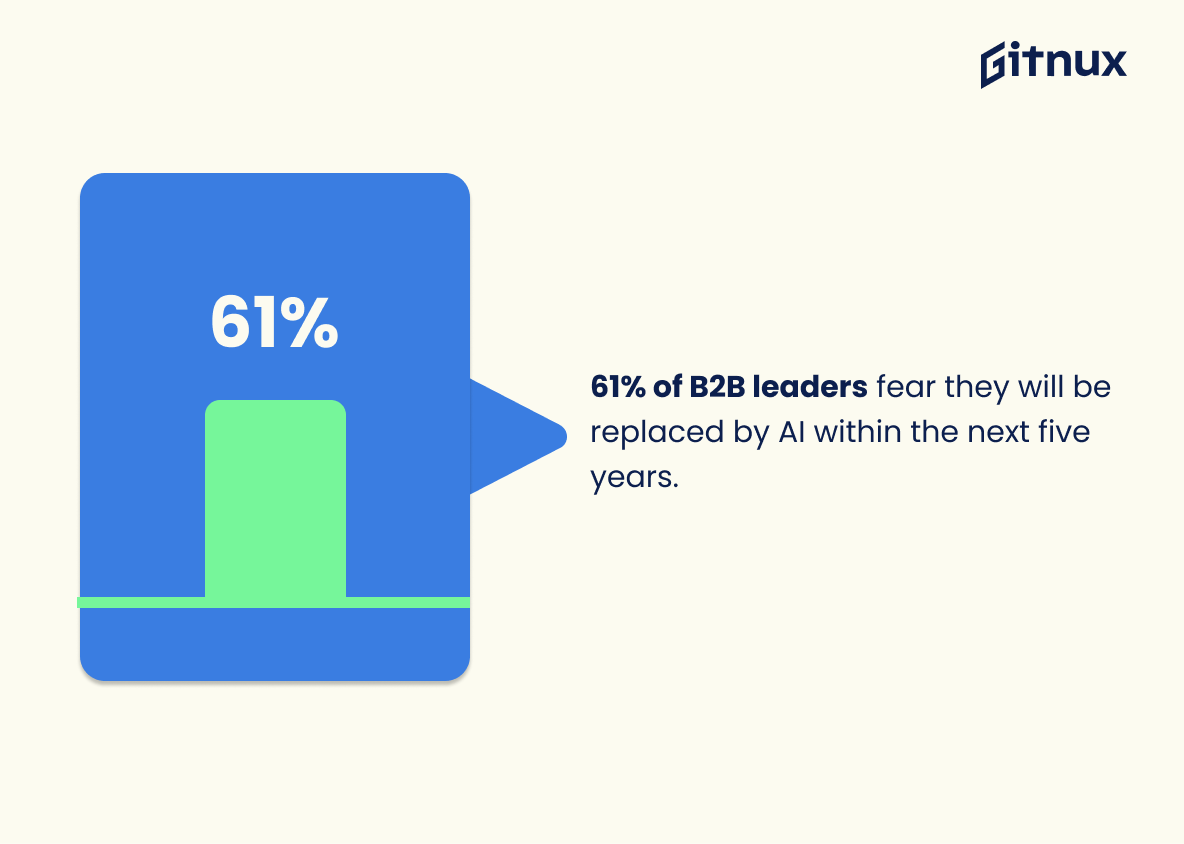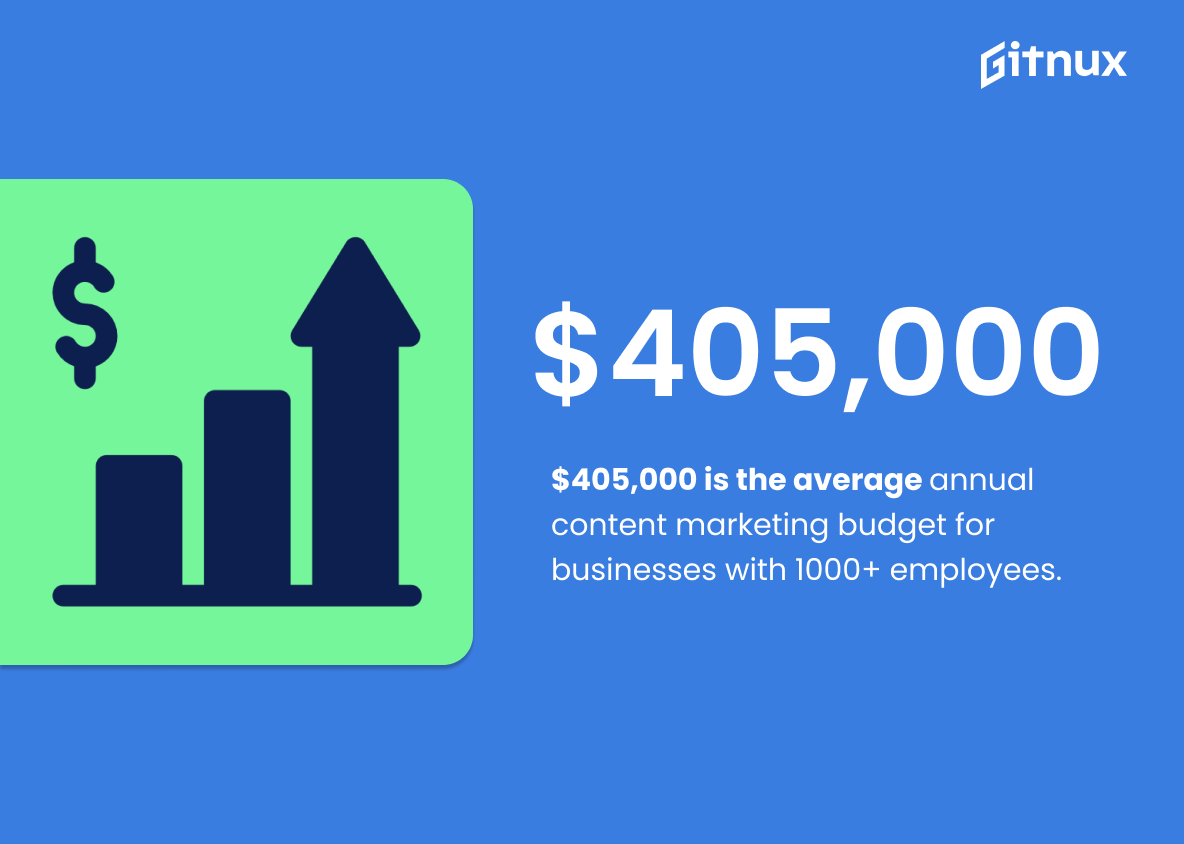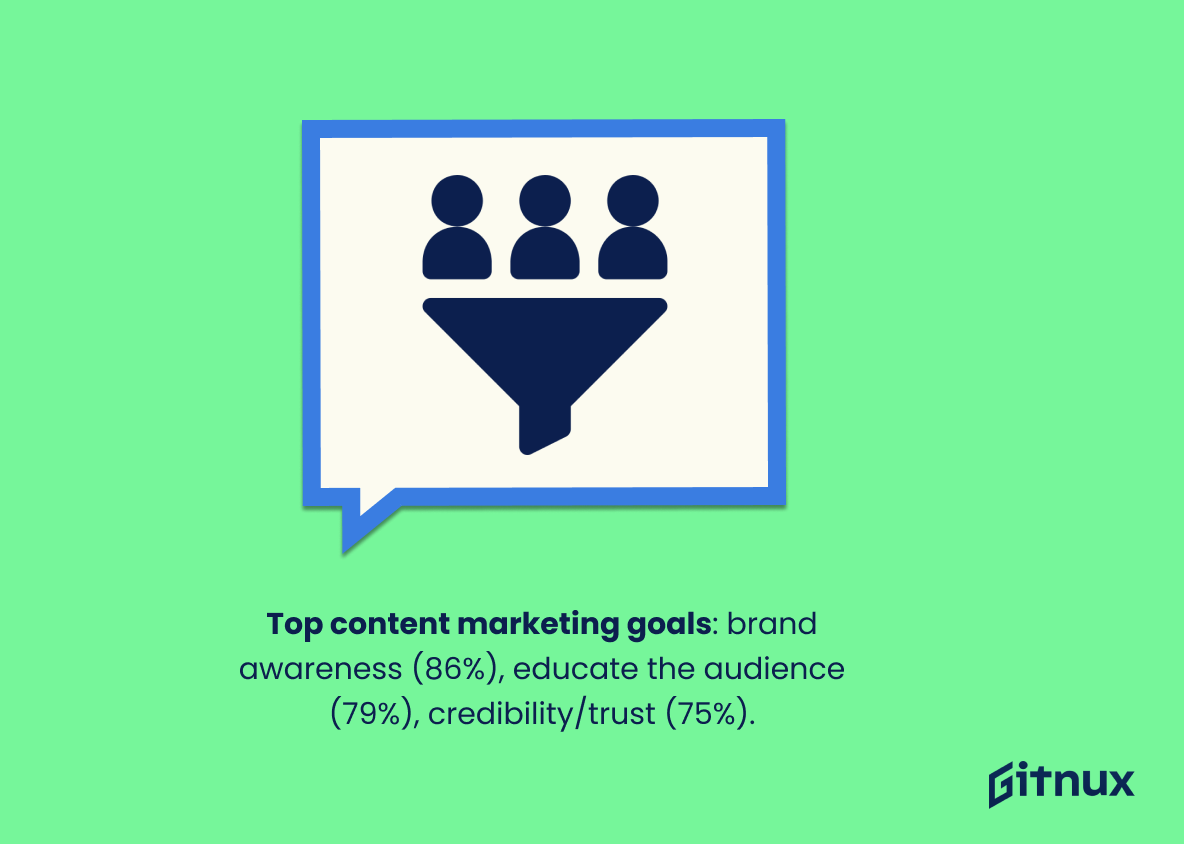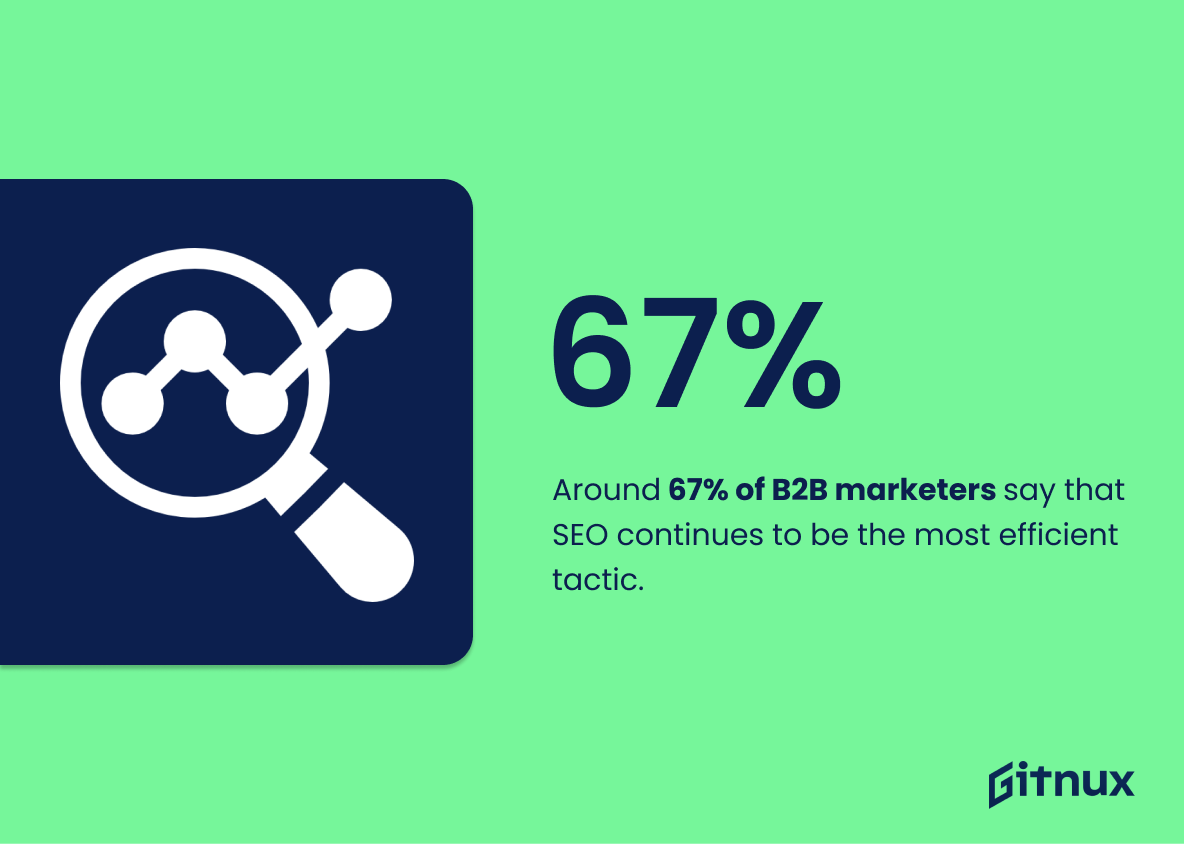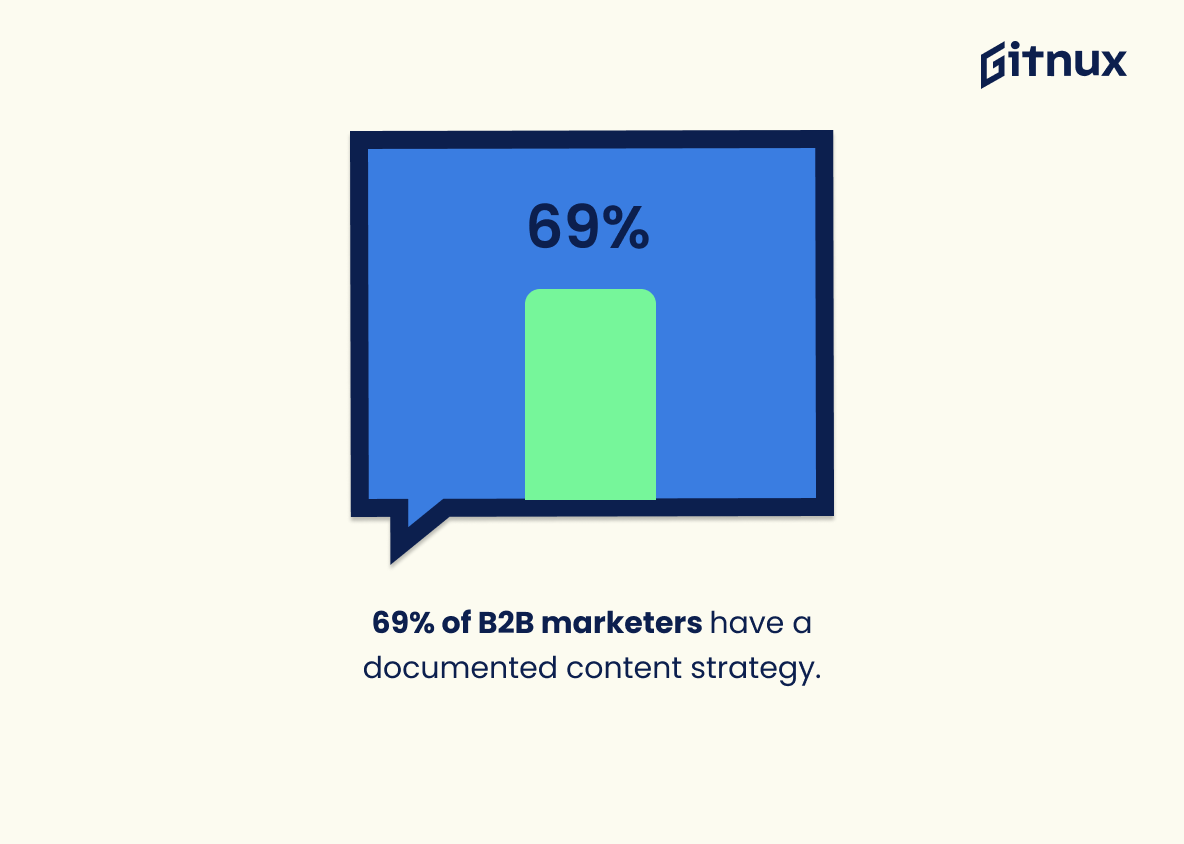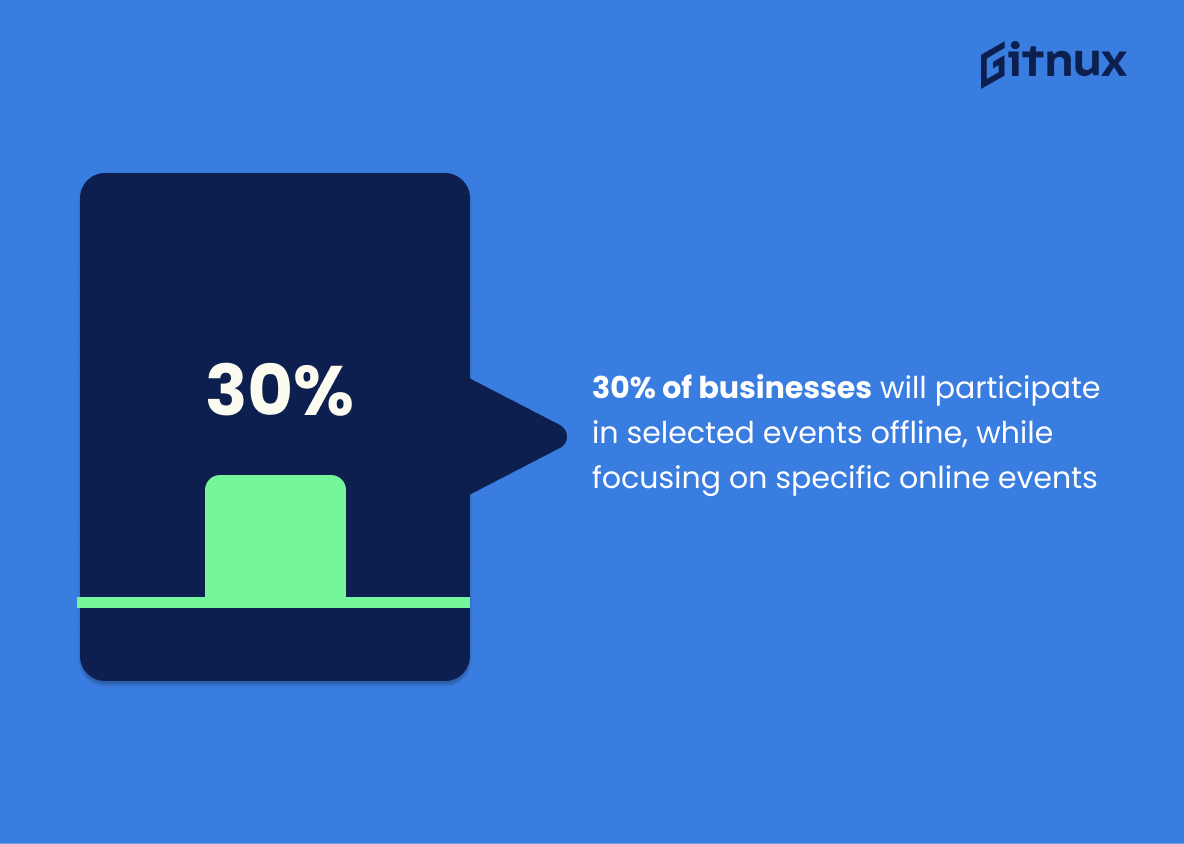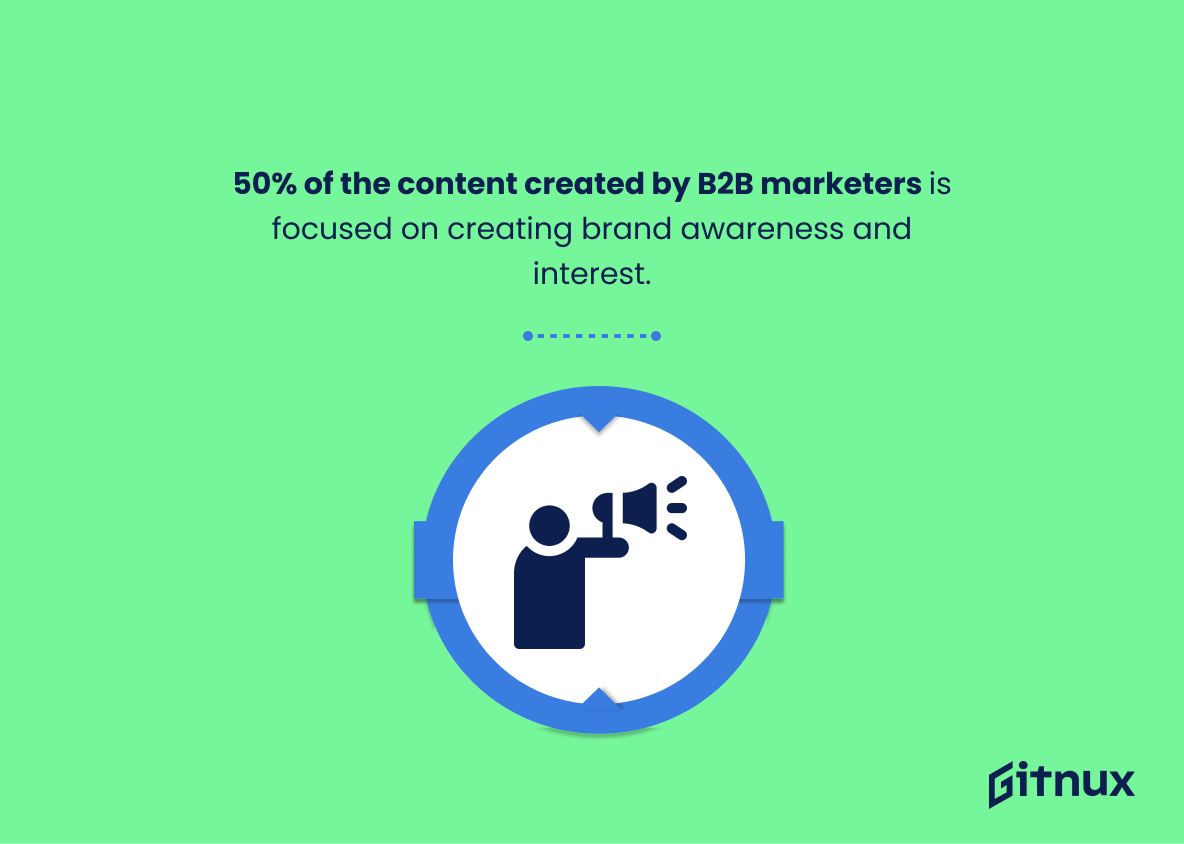Business-to-business (B2B) marketing is an ever-evolving field that requires marketers to stay up-to-date on the latest trends and statistics. With the right data, B2B marketers can make informed decisions that will help them reach their goals.
In this article, we will take a look at some of the most important B2B marketing statistics and how they can be used to improve your marketing strategy. We will discuss topics such as the effectiveness of content marketing, the role of social media, and the importance of personalization. We hope that after reading it, you will have a better understanding of how to use B2B marketing statistics to your advantage.
B2B Marketing: The Most Important Statistics
56% of B2B companies invest in digital marketing, and 44% have the biggest expenses in it.
B2B decision makers are spending more than 70% of the purchase cycle engaging with content before they ever reach out to sales representatives.
General B2B marketing statistics
38% of US B2B marketers conduct marketing activities in-house, while 6% outsource these tasks.
Almost 60% of B2B brands don’t do all of that stuff in-house. Instead, the vast majority of B2B companies get help with activities like keyword research, content writing, and ad management. Some outsource the work to agencies. Others hire freelancers with specific expertise. Either way, nearly 60% of B2B brands get some form of help with their marketing from external sources.
While 25% of all B2B marketers say they operate as a centralized content marketing group that works throughout the organization, 44% of the top performers use that centralized structure. While the number of team members grows by company size, even large companies are most likely to have teams of 2 to 5 (49%).
74% of B2B marketers set goals, but only 3% always achieve them.
32% of B2B marketers don’t have a full-time person dedicated to content marketing. Additionally, 50% of all B2B marketers outsource at least some of their content marketing, with content creation topping the list of outsourced content marketing activities for all respondents (84%).
Budgets for marketing in B2B companies are increasing a year after year and are leveraging towards digital marketing. A well-laid marketing plan results in converting leads into customers even before direct contact with customers, which is confirmed by a statistical fact – 65% of customers come into the funnel by referrals.
61% of B2B leaders fear they will be replaced by AI within the next five years. Meanwhile, 82% feel AI will make them better at their jobs.
56% of B2B companies invest in digital marketing, and 44% have the biggest expenses in it.
Video is one of the most attractive B2B marketing channels according to companies in the US, followed by influencer marketing and artificial intelligence.
13% of B2B marketers in the US allocate more than 15% of their budgets to marketing, while the same share said they reinvest less than 1% of their companies’ budgets into marketing efforts.
$405,000 is the average annual content marketing budget for businesses with 1000+ employees. $213,000 for organizations with 100-999 employees. $81,500 for companies with 1-99 employees.
56% of B2B companies outsource their marketing and maintain an in-house team.
The 3 most-cited content marketing goals achieved in the last year were: creating brand awareness (86%), educating the audience (79%), and building credibility/trust (75%). Among other achieved goals are building subscribed audiences (45%), generating sales/revenue (53%), and building loyalty with existing clients/customers (63%).
B2B marketing tactics
Email marketing (84%) is the most implemented marketing tactic in B2B business, according to the Sagefrog Marketing Group report. Followed by social media & social media advertising (75%), blogging & content marketing (69%), SEO (60%), tradeshows & events (54%).
Among other marketing tactics, used more often by B2B marketers are SEM (46%), Public Relations (44%), seminars & webinars (43%), and video marketing (38%).
See the best Search Engine Marketing (SEM) Software
87% of Marketers distribute their content by email, and that’s not without cause. 59% of the customers claim that email influences their purchase decisions, which is why marketers say that email is one of the best channels for generating revenues – 59% of them indeed.
Only two-thirds (66%) of content marketing programs prioritize their audience’s informational needs over their organization’s sales/promotional message. Yet, 88% of the top performers do.
Content Marketing Institute research revealed that 84% of respondents have used paid distribution channels in the last 12 months (91% among the top performers). Among those who use paid methods, 72% said they’ve used paid social (75% of top performers in this group did).
92% of B2B marketers use social media for content distribution, a rate just below email usage (93%). And LinkedIn commands a massive 97% of B2B marketers who take social media action, almost double the number reported in 2010.
95% of B2B marketers utilize social media content in some form, making it the most widely-used content type.
The most efficient content marketing tactic continues to be search engine optimization. Around 67% of marketers say that SEO was the most efficient tactic that was implemented last year.
Although 93% of blogs contain images, only 30% of bloggers say they get “strong results” from this content format. In comparison, 26% of blogs contain videos, which 41% say deliver strong results. On top of this, just 7% of blogs contain some form of audio content – such as podcasts – however, 33%of bloggers say this is effective.
B2B content marketing statistics
69% of B2B marketers have a documented content strategy.
According to Content Marketing Institute, top B2B performers are more likely to use non-owned channels to distribute content organically. Such as media/influencer relations (46% of top performers vs. 34% of all), guest posts/articles in third-party publications (63% vs. 48%), and speaking/events (70% vs. 63%).
73% of companies that spend from 10% to 70% of their total marketing budget on content marketing are very successful.
30% of businesses will participate in selected events offline, while focusing on specific online events (such as webinars). 30% intend to create longer-term content plans.
According to Statista, 66% of B2B marketers worldwide are planning to increase their B2B content marketing spending in the following 12 months, out of which 20% plan to increase it by more than 9%.
50% of the content created by B2B marketers is focused on creating brand awareness and interest.
Most marketers publish new content several times weekly. And in many cases, B2B content takes longer to write. There’s usually more research. More data. And more polish that needs to be done.
It takes an average of 4 hours and 10 minutes to write an article. That’s 74% more time than in 2014. On average, blog posts are 70% longer than they were in 2014.
Listicles (or list sports, articles that are written in a list-based format) get 218% more shares than “how to” tutorial-style posts, as stated by Backlinko.
33% of B2B companies’ top marketing spend is content marketing.
Check out our latest Content Marketing Statisitcs
LinkedIn is a top-rated social media platform used for both organic(95%) and paid(76%) content marketing by B2B marketers in the last 12 months, followed by Twitter and Facebook.
59% of the B2B marketers who measure content marketing ROI (43%) rate their ability to demonstrate ROI as excellent or very good.
A full 71% of B2B brands admit they have a “customer-centricity gap”, which occurs when the digital experience offered by a company does not meet the needs and expectations of customers. Yet 82% of B2B organizations have undergone a digital transformation project. And 37% say their digital experience is what differentiates them as a brand.
The monthly increase in organic web traffic is averagely 10.5%. This level of increase is expected after around 8 months of consistent, high-quality content production.
Average time people spend on a page is 1:24. Google requires only a time on page of 10 seconds for a session conceited to be engaged. However, longer times on the page correlate with higher content quality and relevancy.
67% of B2B content teams create top-of-funnel content the most often. 28% say they create content for people in the middle of the funnel. Just 5% focus their attention on B2B buyers moments away from buying.
B2B buyers read 13 pieces of content before making a buying decision.
65% of B2B buyers cite vendor websites as one of their most highly influential content types. This is compared to the 48% who say the same about third-party websites and the 39% who find third-party articles by independent publishers influential.
B2B decision makers are spending more than 70% of the purchase cycle engaging with content before they ever reach out to sales representatives.
According to Isoline Communications, video is sure to be a B2B content marketing trend that will stick around for years to come. 53% of survey respondents said that video was the most useful form of content.
B2B lead generation statistics
65% of customers come into the funnel by referrals.
Email newsletters (31%) are the best way to nurture leads, while blog posts/short articles (31%) and social media content (25%) are best for building brand awareness.
HubSpot found that traffic from LinkedIn generated the highest visitor-to-lead conversion rate at 2.74%, almost 3 times higher (277%) than both Twitter (.69%) and Facebook (.77%).
70% of B2B buyers and researchers are watching videos throughout their path to purchase. That’s a 52% jump in only two years. Nearly half of these researchers are viewing 30 minutes or more of B2B-related videos during their research process, and almost one in five watches over an hour of content.
84% of B2B buyers also say they head to social media when they’re actively making a purchasing decision. They want to hear other real-life opinions on a product, service, or company. Before they commit to buying it.
80% of B2B marketing leads from social media come through LinkedIn. 92% of B2B marketers use the platform over all others.
89% of B2B researchers gather information about potential purchases through the internet. 71% of B2B researchers start their research with a generic search.
Supplementary Statistics
73% of B2B marketers say video positively impacts their ROI.
The majority of marketers are seeing tangible returns on their investment in video, making it a valuable tool for any B2B marketer looking to maximize their ROI.
B2B marketers who prioritize blogging are 13 times more likely to have positive ROI on their efforts.
This highlights the potential for a positive return on investment when blogging is prioritized, and serves as a strong incentive for businesses to invest in this form of content marketing. By emphasizing the potential for success, this statistic encourages B2B marketers to take advantage of the opportunities that blogging can provide.
80% of B2B leads sourced through social media come from LinkedIn.
This statistic is a powerful reminder of the importance of LinkedIn in B2B marketing. It highlights the potential of the platform to generate leads and provides a strong incentive for businesses to invest in their presence on the platform. Furthermore, it serves as a reminder of the need to tailor marketing strategies to the specific platform, as the same approach may not be as effective on other social media sites.
For 89% of B2B marketers, brand awareness is the most important goal.
The majority of B2B marketers prioritize brand awareness above all else, indicating that it is a key factor in the success of their campaigns. This statistic is a valuable insight for any B2B marketer looking to maximize their efforts and make the most of their marketing budget.
67% of B2B buyers rely more on content to research and make purchasing decisions than they did a year ago.
Buyers are increasingly relying on content to inform their purchasing decisions, which means that businesses must be prepared to provide content that is both informative and engaging. By understanding this trend, businesses can create content that resonates with their target audience and helps them make informed decisions. This statistic is an important reminder that content is a key factor in successful B2B marketing.
Only 42% of B2B organizations have a documented content marketing strategy.
Without a strategy in place, these organizations are likely to struggle to effectively reach their target audience and maximize their return on investment. This statistic highlights the importance of having a well-thought-out content marketing strategy in place for B2B organizations, and serves as a call to action for those who have yet to create one.
87% of B2B marketers say email is one of their top free organic content distribution channels.
Email is a highly effective tool for reaching potential customers and driving engagement. By highlighting this statistic, a blog post about B2B marketing statistics can demonstrate the importance of email in the B2B marketing landscape and provide readers with valuable insights into how to maximize their content distribution efforts.
Approximately 47% of B2B marketers consider mobile devices as the most important digital marketing channel.
Nearly half of B2B marketers recognize the potential of mobile devices to reach their target audiences and drive conversions. This highlights the importance of mobile optimization and the need for B2B marketers to stay up-to-date with the latest mobile trends and technologies.
The average B2B buyer’s journey is 22% longer than it was five years ago.
Buyers are taking more time to research and consider their options before making a purchase, which means that B2B marketers must be more strategic and creative in their approach to reach and engage potential customers. This statistic is a reminder that B2B marketers must stay ahead of the curve and be prepared to adjust their strategies to meet the needs of their target audience.
90% of B2B marketers say the leading attribute of content marketing effectiveness is “audience relevance”.
By understanding the needs and interests of their audience, B2B marketers can create content that resonates with their target audience and drives the desired results. This statistic should be taken into consideration when creating blog posts about b2b marketing statistics, as it emphasizes the importance of audience relevance in content marketing.
B2B emails have an average open rate of 15.1%.
When done correctly, B2B emails can be a powerful tool for connecting with potential customers and driving conversions. This statistic is an important reminder that B2B marketers should be investing in strategies that will help them maximize their email open rates.
48% of B2B marketers say that Google has the most significant impact on their content distribution success.
The majority of marketers recognize the importance of Google in helping them reach their content distribution goals. This statistic is a valuable insight for any B2B marketer looking to maximize their content distribution success.
Conclusion
B2B marketing statistics show that businesses are increasingly turning to digital channels to reach their target audiences. Companies that embrace digital marketing strategies, such as content marketing, social media, and email, are reaping the rewards of increased brand awareness, higher engagement rates, and higher conversion rates. Companies that are not taking advantage of these channels are missing out on potential opportunities to grow their business.
FAQ
What is B2B marketing?
B2B marketing is the marketing of products or services to businesses or other organizations.
What are the benefits of B2B marketing?
Benefits of B2B marketing include increased brand awareness, improved customer relationships, increased sales, and more efficient targeting of customers.
What are some common B2B marketing strategies?
Common B2B marketing strategies include content marketing, email marketing, search engine optimization, social media marketing, and trade shows.
What are the challenges of B2B marketing?
Challenges of B2B marketing include understanding customer needs, staying up to date with industry trends, and competing with larger companies.
How can B2B marketing be measured?
B2B marketing can be measured by tracking website analytics, customer feedback, and sales figures.
Resources
Backlinko: “30 Crucial B2B Marketing Statistics (2022)”, cited January 2023. (Source)
Content Marketing Institute: “2020 B2B Content Marketing: What the Successful Do [New Research]”, cited January 2023. (Source)
Content Marketing Institute: “B2B Content Marketing 2020”, cited January 2023. (Source)
Content Marketing Institute: “What B2B Brands Need to Know to Succeed on LinkedIn”, cited January 2023. (Source)
First Page Sage: “B2B Content Marketing Statistics”, cited January 2023. (Source)
Google: “The Changing Face of B2B Marketing”, cited January 2023. (Source)
HubSpot: “LinkedIn 277% More Effective for Lead Generation Than Facebook & Twitter [New Data]”, cited January 2023. (Source)
Isoline Communications: “The top tech content marketing trends”, cited January 2023. (Source)
LinkedIn: “Get Proof: The Case for B2B Marketing on LinkedIn [Infographic]”, cited January 2023. (Source)
Marketing Charts: “B2B Buyers Rely on Vendor Websites for Content”, cited January 2023. (Source)
MediaPost: “B2B Wannabes: Most Brands Have A Customer-Centricity Gap, Study Finds”, cited January 2023. (Source)
Orbit Media Studios:” New Blogging Statistics: What Content Strategies Work in 2022? We asked 1016 Bloggers”, cited January 2023. (Source)
Sagefrog Marketing Group: “2021 B2B MARKETING MIX REPORT”, cited January 2023. (Source)
Semrush: “40+ Content Marketing Statistics to Power Your 2022 Strategy”, cited January 2023. (Source)
Smart Insights: “Essential content marketing statistics for 2020”, cited January 2023. (Source)
Smart Insights: “B2B marketing trends for more leads and sales in 2021”, cited January 2023. (Source)
Statista: “Share of budgets allocated to marketing according to B2B companies in the United States in 2020”, cited January 2023. (Source)
Statista: “Share of B2B marketers planning changes to their content marketing budgets worldwide in 2022”, cited January 2023. (Source)
Statista: “Share of B2B companies who have dedicated in-house marketing teams in the United States in 2020”, cited January 2023. (Source)
Web FX: “150 B2B Marketing Statistics for 2023: Which Will Shape Your Strategy?”, cited January 2023. (Source)
ZipDo, cited June 2023: B2B Marketing Statistics
